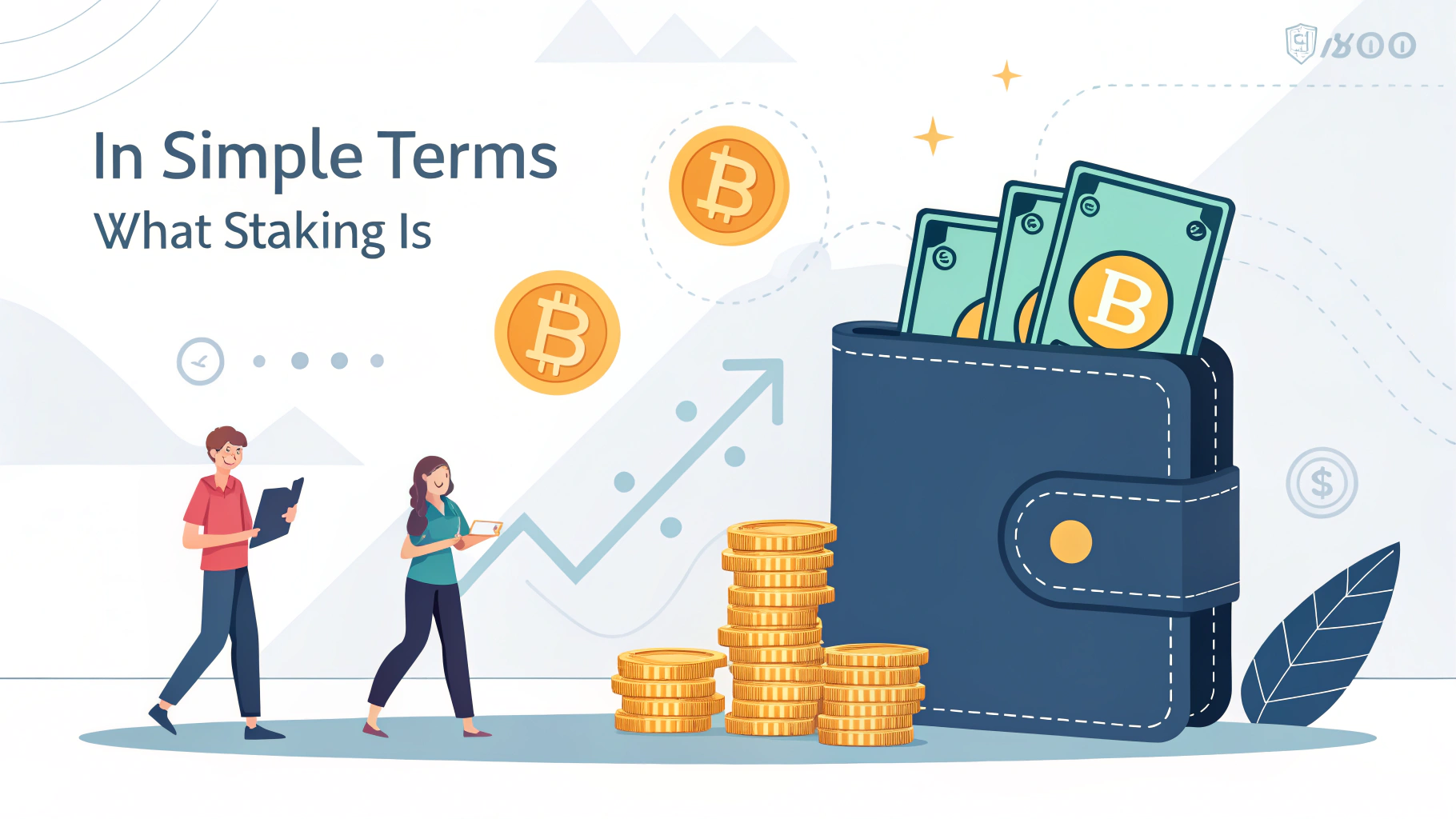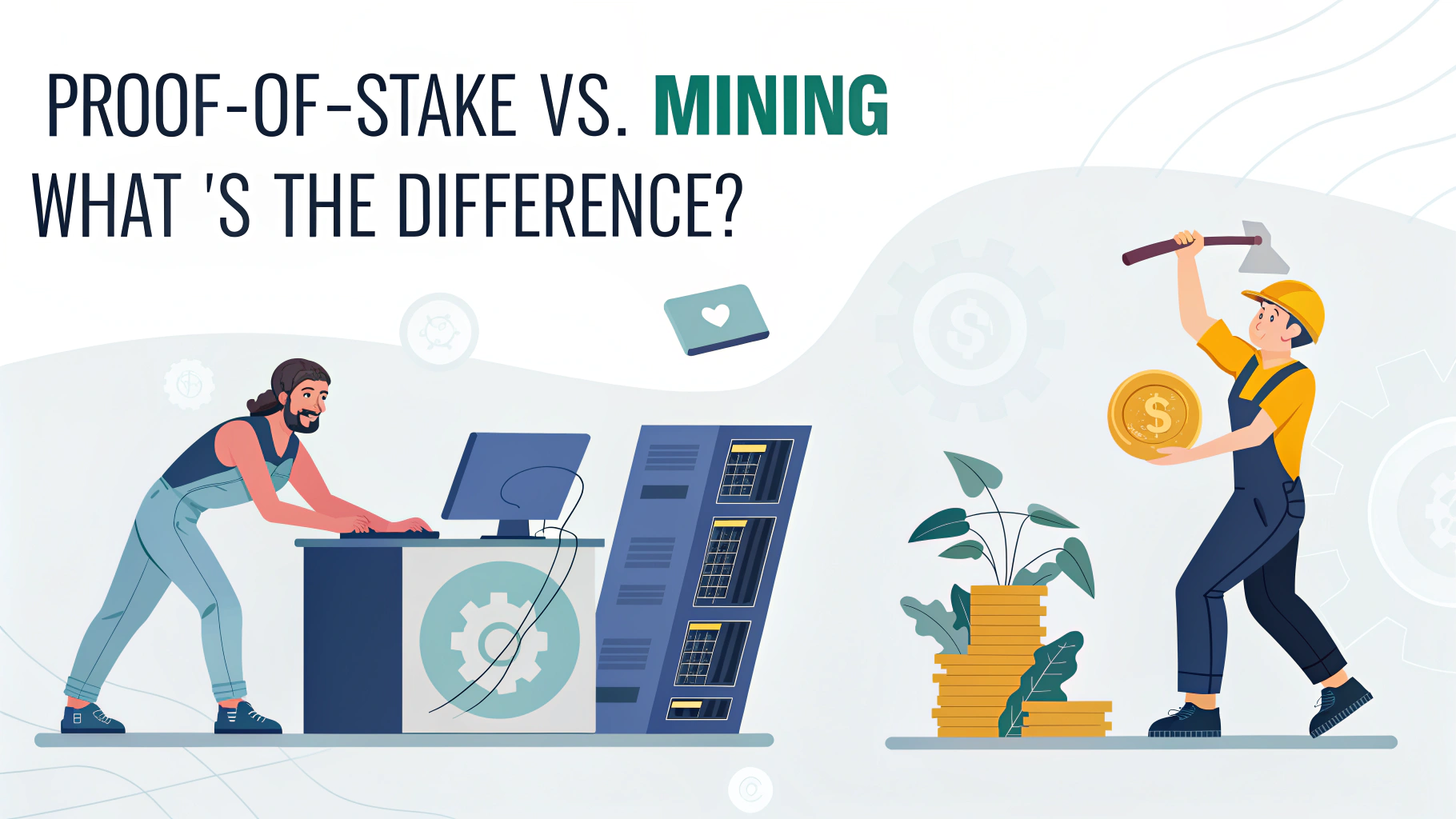What is cryptocurrency staking and how to earn money from it — ASCN

What Is Crypto Staking and How to Earn From It – ASCN
Crypto stopped being some mysterious tech long ago. Today, people trade it, invest in it, and — yes — even earn passively from it. One of the most talked-about ways to do that is staking. Let’s unpack what that actually means.
In Simple Terms: What Staking Really Is
You’ve probably heard the phrase “make your money work for you.” In crypto, that’s almost literal.
Staking is like putting your coins into a kind of deposit — they stay yours, but now they generate income.

So why would anyone pay you just for holding crypto?
Here’s the trick: by staking, you’re helping the blockchain run smoothly and stay secure. That’s what you’re rewarded for — like a bank paying interest, only instead of fiat you’re earning tokens.
How It Works — a Quick Example
Imagine a lottery where your odds improve with every extra ticket. In staking, it’s similar: the more tokens you lock, the higher your chance to be chosen to validate transactions and earn rewards.
Let’s say you own 1,000 Cardano tokens. You stake them through your wallet — they’re locked, but start working for you. Every time your tokens help confirm blocks, you get a small cut of the rewards. Simple as that.
Proof-of-Stake vs. Mining — What’s the Difference?
Proof-of-Stake (PoS) is the system behind most modern blockchains. Unlike mining, where you need pricey gear and massive power consumption, PoS relies on how many tokens you hold. The more you stake, the greater your chances to validate transactions and earn rewards.
That’s why staking is considered greener and easier to access. You don’t need a warehouse full of GPUs — just a few coins and the will to participate.

Why Staking Matters for Blockchains
Staking is the backbone of every PoS network. Without stakers locking up their tokens, the blockchain couldn’t confirm transactions, build new blocks, or stay secure.
Here’s what staking does behind the scenes:
-
Keeps the network decentralized — anyone can join in.
-
Protects against attacks (it’s expensive to hack a network if you’d need to own most of its tokens).
-
Cuts out the need for power-hungry mining hardware.
And there’s another bonus — it helps the token economy stay stable. When people stake, they’re less likely to dump coins on the market. That reduces volatility and supports long-term growth.
Staking Pros and Cons — What Investors Should Know
At first glance, staking sounds like free money. Just hold your crypto and watch the rewards pile up. But, as always, there’s more to it.
The Upside: Passive Income
The main attraction is obvious — passive earnings. You don’t have to trade or time the market. Your coins do the heavy lifting.
As of 2025, popular staking coins like Ethereum, Cardano, and Solana offer anywhere between 4% and 12% annual returns. Not bad for simply holding.
The Downside: Risks and Lock-Ups
Of course, nothing in crypto is risk-free. When you stake, your funds are often locked for a fixed term — no early withdrawals. And if the token’s price crashes, those juicy percentage returns won’t save you.
There are also technical risks — wallet hacks, exchange issues, validator mistakes. So choosing a reliable staking platform isn’t just a detail — it’s essential to protect your investment.
What Determines Your Staking Profit
Your staking income depends on several things:
-
The token itself — every network has its own reward rate.
-
The platform — exchanges often take a small cut, while DeFi platforms let you keep more.
-
The lock-up period — longer commitments usually mean higher yields.
-
And don’t forget about taxes and the overall market mood in your country. They matter more than most beginners think.
Which Cryptocurrencies Are Worth Staking?
If you’d rather make your crypto work instead of letting it sit idle, staking is the go-to option. But which coins are actually worth it right now? Let’s run through the crowd favorites of 2025.
Top 5 Staking Coins for 2025
Ethereum (ETH) — the heavyweight champion. Since switching to Proof-of-Stake, ETH has become a staking staple. Around 4–6% yearly. Stable, predictable, and trusted.
Cardano (ADA) — the friendly neighbor of crypto. Staking here is almost effortless: install Daedalus, deposit ADA, done. Yields hover around 4.5–5%. Modest but solid.
Solana (SOL) — higher risk, higher reward. Expect roughly 6–8% a year, though Solana’s occasional hiccups might test your nerves.
Polkadot (DOT) — a kind of Swiss Army knife for blockchains. Around 10–12% annual returns and exposure to an entire multichain ecosystem.
Avalanche (AVAX) — the fast-growing newcomer. Easy staking via wallets or exchanges, with yields around 8–10%.
Where to Check Yields
To see which tokens pay best, you can:
-
Look directly on major exchanges — most list rates, lock-up periods, and rewards clearly.
-
Browse aggregator sites that track staking returns across networks (very handy).
-
Or just ask the community — crypto chats and forums are full of real-world feedback you won’t find in marketing pages.
And always check the date on any data you find. Yields shift constantly, and stale info can mislead you badly.
Fixed vs. Variable Rates — What’s the Catch?
Fixed-rate staking means you know upfront what you’ll earn — simple and predictable. The downside: your funds stay locked until the end of the term.
Variable rates, on the other hand, fluctuate with network conditions. Some months they’re great, others not so much. You can usually unstake anytime.
There’s also a hybrid approach — part fixed, part flexible — balancing returns with some liquidity.
Where and How to Stake
So you picked your coin. What next? Time to decide where to stake it.
Centralized Exchanges (Binance, OKX, etc.)
The easiest entry point. Two clicks and you’re in.
Pros:
-
Simple interface, beginner-friendly.
-
Tiny minimum deposit — you can start with a few dollars.
-
Sometimes exchanges run promos with boosted rates.
Cons:
-
You hand control to the exchange.
-
Fees eat into your profits.
-
Account risks: suspensions, KYC rules, regional bans.
If you’re new and want to keep things simple, exchanges are the perfect on-ramp.
Decentralized Staking (Wallets, Validators, DeFi)
The next level. Here you stake directly in the network — no middleman.
Pros:
-
You control your private keys.
-
Usually higher returns.
-
Freedom to choose validators and terms.
Cons:
-
Technically more complex.
-
Validator errors can cost you funds.
-
Higher chance of user mistakes.
It’s ideal for those who’ve already dipped their toes in crypto and want more independence.
Comparing the Two Approaches
Centralized platforms win on convenience, no question. But you’re trusting them with your assets.
DeFi staking gives you more control — and often better yields — but it demands more effort and attention.
On exchanges, you might lose up to 20% of profits in fees. In DeFi, you usually pay only a validator commission, or none if you run your own node. But then, all the responsibility — uptime, setup, maintenance — is on you.
How Much Can You Actually Earn?
Let’s get real: there’s no “1000% APY” magic button here. But you can make steady, predictable returns.
Example
You stake 1,000 SOL at 7% APY. After a year, that’s 70 SOL.
If Solana stays at $200, that’s $1,400 earned.
If it doubles — even better. If it crashes — well, that’s part of the game.
Your real gains depend on token price, lock period, and network conditions.
Taxes and Withdrawals
By 2025, most countries treat staking income as investment profit — meaning it’s taxable.
Many big exchanges like Binance or Kraken automatically prepare income reports to simplify filing.
Withdrawals depend on the platform: on exchanges it’s just “Withdraw → choose network → wallet.” In DeFi, you might face an “unstake” waiting period before you can move funds.
Who Should Try Staking (and How to Start)
If you’re not into trading charts all day but still want your crypto to grow, staking is tailor-made for you.
Here’s how to begin — step by step.
A step-by-step guide for a beginner
Step 1. Pick a Coin
Start with big names: Ethereum, Cardano, Solana, or Polkadot. Just make sure the token supports staking.
Step 2. Choose a Platform
For beginners, centralized exchanges like Binance or Bybit are easiest. Select the coin, term, rate — click “Stake.”
Step 3. Buy the Coin
Top up your account and get the token you plan to stake.
Step 4. Choose the Term and Rate Type
Fixed for higher yield, flexible for easier withdrawals. If unsure, go flexible first.
Step 5. Watch It Grow
That’s it — your crypto’s now part of the network. Rewards usually arrive daily or weekly.
Start small, get comfortable, then scale up.
Safety Tips and Final Thoughts
Stick with reputable exchanges or official wallets — unknown projects are not worth the risk.
Keep your recovery phrases offline. Use hardware wallets for DeFi.
And beware of offers that sound too good to be true — they usually are.
Diversify your staking across coins or platforms — it’s the simplest way to stay safe.
And if you don’t want to spend nights comparing yields and platforms, there’s always a shortcut.
ASCN.AI, a crypto-AI platform, can crunch the numbers for you — compare staking conditions, forecast risks, and pick the most profitable coins in seconds.
In 2025, with hundreds of projects fighting for your attention, smart analytics like that can save hours — and maybe even a few costly mistakes.


